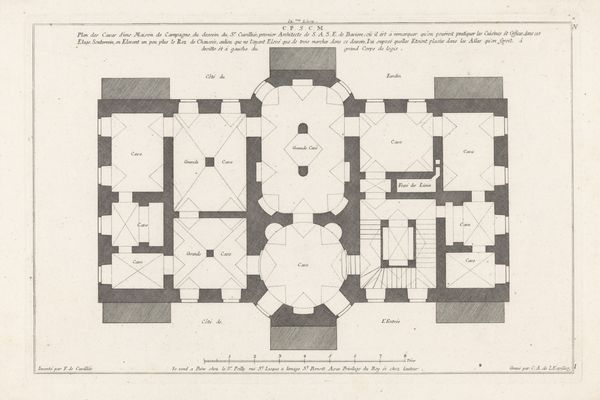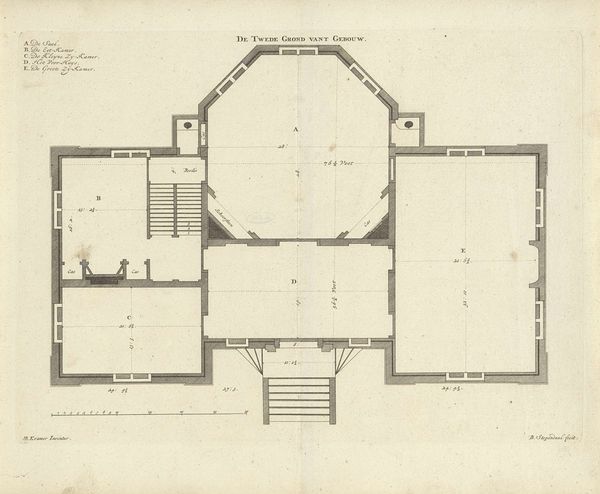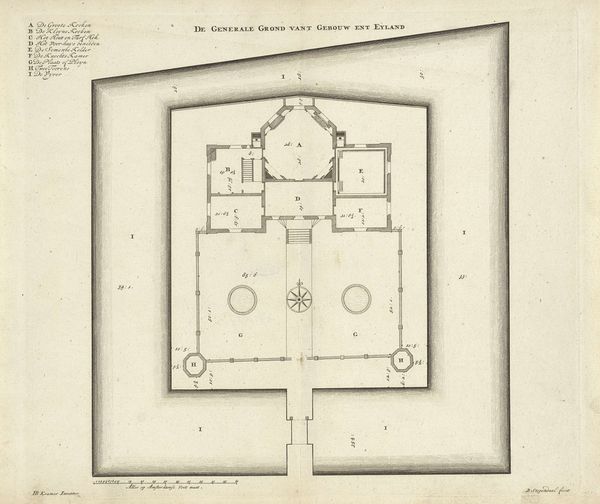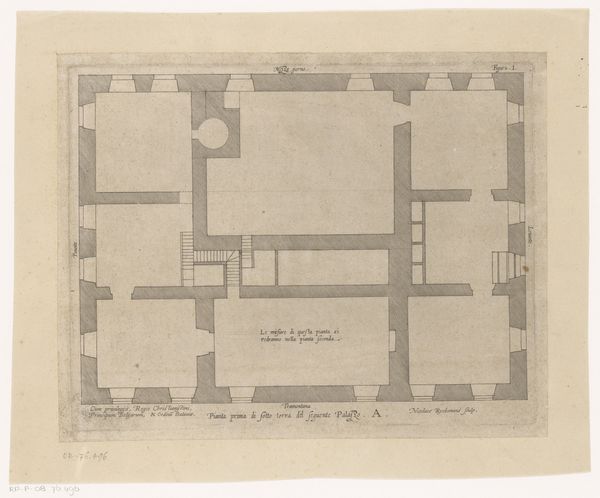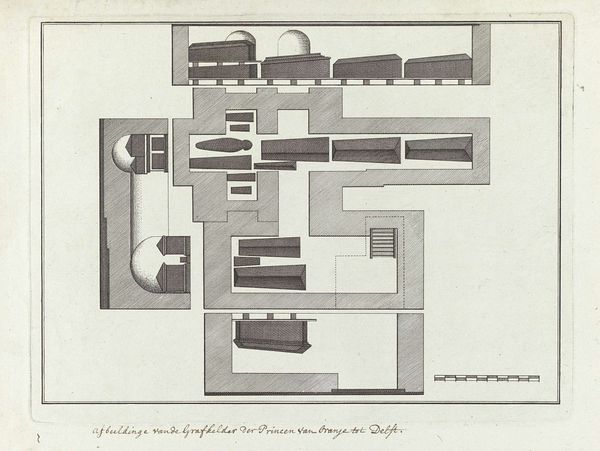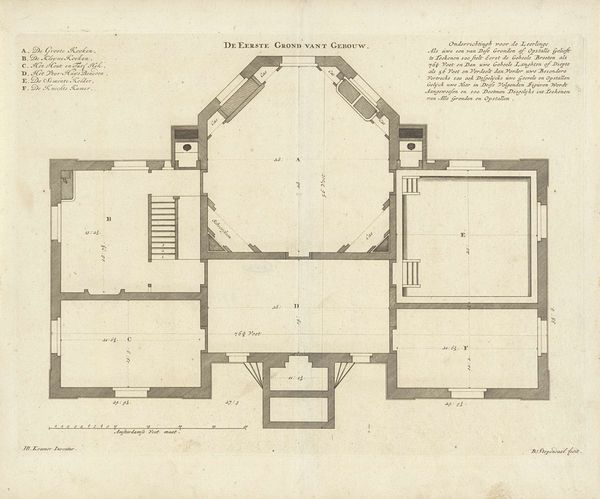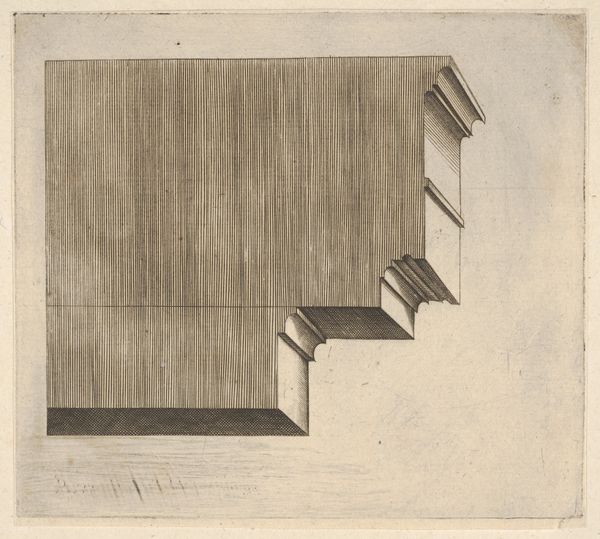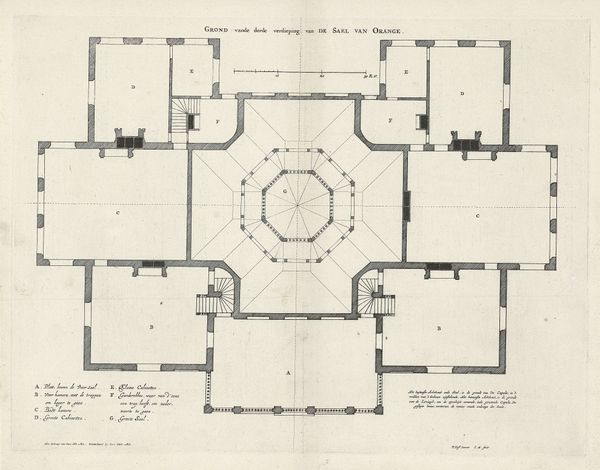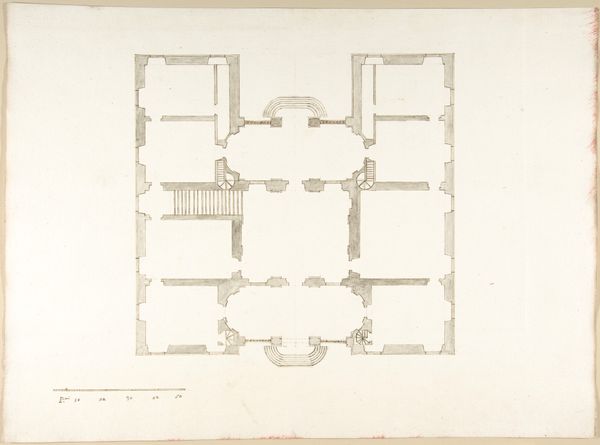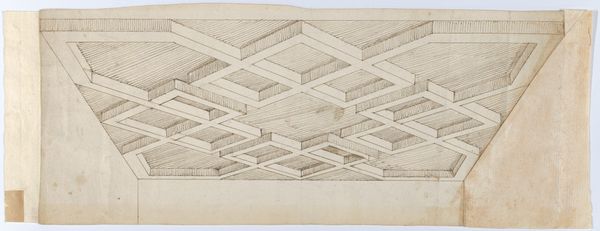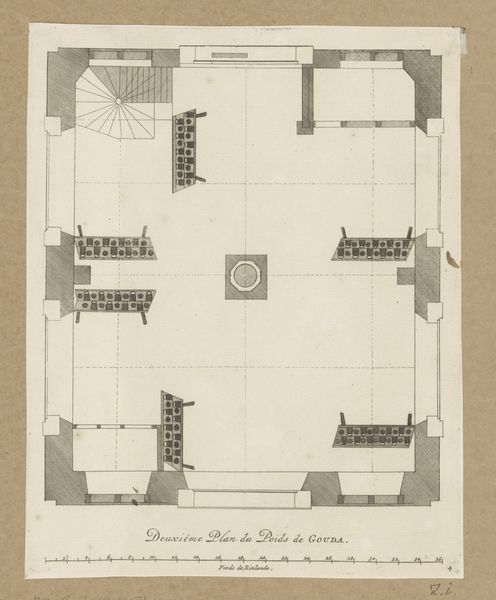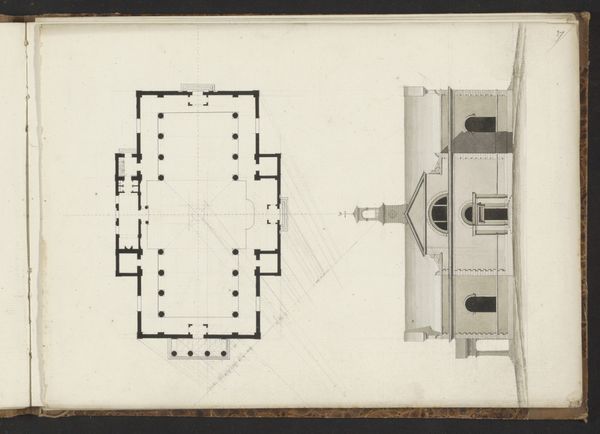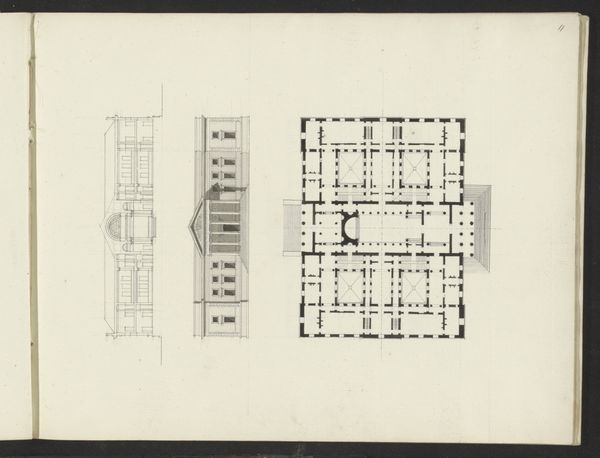
Bovenaanzicht van het dak van huis De Nes te Vreeland 1687 - 1693
0:00
0:00
bastiaenstopendael
Rijksmuseum
drawing, print, engraving, architecture
#
drawing
#
dutch-golden-age
# print
#
cityscape
#
engraving
#
architecture
Dimensions: height 259 mm, width 349 mm
Copyright: Rijks Museum: Open Domain
Editor: Here we have "Overhead View of the Roof of House De Nes in Vreeland," a drawing made sometime between 1687 and 1693 by Bastiaen Stopendael, currently held at the Rijksmuseum. I’m immediately struck by the precise lines and geometric composition. What stands out to you in terms of the formal elements at play? Curator: The composition presents a rigorous examination of architectural form. Note the deployment of Euclidean geometry: the squares, rectangles, and octagonal shapes. How do these shapes interact? Do they achieve a sense of balance, or is there a calculated tension? Editor: I see balance, especially with the mirroring on either side of the central rectangle. But I’m curious about the empty space and simple planes within the shapes, they almost feel…stark. Curator: Precisely. Consider how Stopendael articulates space and depth through line and hatching, thereby creating internal variations in tone, which, in turn, emphasize spatial recession. Observe the way light is implied rather than represented through tonal contrast. What effect does that choice produce? Editor: It does lend the drawing a very diagrammatic, almost scientific, feel. It’s as if Stopendael is less concerned with depicting a specific building, and more concerned with abstracting and codifying its structure. Curator: Exactly. Through reduction and purification of form, the artist communicates the essential properties of architectural space. Do you consider that this abstraction diminishes or enhances the architectural presence in the image? Editor: I think it heightens it. The simplified shapes force you to consider the underlying structure rather than getting lost in details. I wouldn’t have expected to find so much to analyze in what seemed at first a straightforward technical drawing. Curator: Formal analysis offers such rewarding discoveries. This kind of rigorous visual inquiry allows us to unlock the hidden dialogues embedded within an artwork’s construction.
Comments
No comments
Be the first to comment and join the conversation on the ultimate creative platform.
